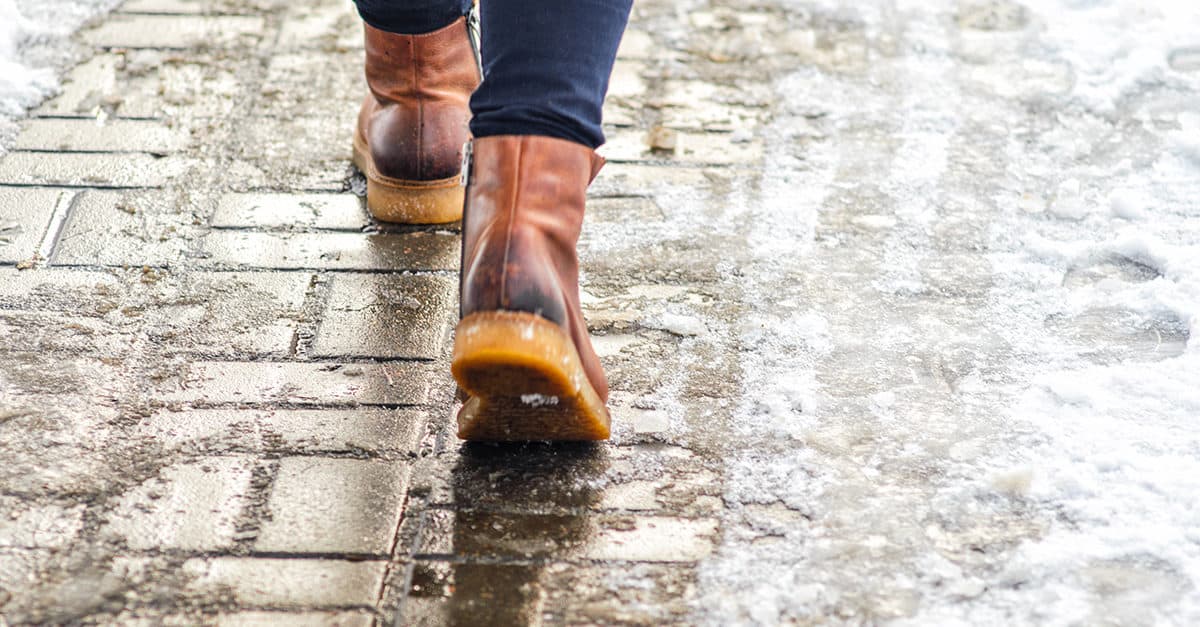Melt With Less Mess
Drawbacks of traditional ice melts create demand for cleaner products

Using traditional ice melt brings a trade-off: In exchange for surfaces that are safe and no longer slippery, you’re left with residue from chloride granules. This residue is tracked inside, creating a winter scene you won’t see on any holiday card: Foyers and entranceways covered in unsightly ice-melt particles.Unlike most other winter weather inconveniences, this messy ice-melt residue has a serious potential for harm.For starters, there’s the cost, effort, and hassle of cleaning it up—a burden felt acutely by facility managers and operating budgets. Add up labor, equipment, and supplies, and the cost of special cleaning can reach $50 to $60 per entranceway per storm event, according to Mark Warner, Cleaning Management Institute (CMI) education manager for ISSA, the worldwide cleaning industry association.Warner points out that with two to three entranceways and two to three cleanings per day during a storm, the added cost of cold weather-driven cleaning can often exceed $400 to $500 per day per building.Adding insult to injury, ice melt is typically applied most generously in high-traffic places, where the risk of slip-and-fall accidents is greatest. As a result, the biggest residue messes are in full view, taking a psychological toll on pedestrians, patrons, and passersby. Image-focused restaurants, campuses, office complexes, and hotels don’t hold the same appeal when their entranceways are awash in ice melt tracked in from streets and sidewalks. What’s more, the particles themselves can create new slip-and-fall risks.
These drawbacks point to the need for an ice melt that works cleaner, without residue. Designed to meet this need, cleaner products are beginning to appear on the market, offering high performance without tracking.
Understanding why these products are considered cleaner starts with understanding how traditional ice melts work. Chloride-based ice-melt solutions are hygroscopic, meaning they attract moisture from the atmosphere. When they are tracked indoors, they melt, creating dampness and puddles. The result is a cloudy solution that leaves streaks or white crystalline residue on carpets, flooring, and mats—which won’t disappear no matter how many times you clean them.
This reality has fueled a recent spike of interest in ice-melt products that are residue- and chloride-free and have a neutral pH, which are critical characteristics for cleaner melting.
Despite these recent breakthroughs, old habits die hard. No one expects building managers or residents to stop using granular salts altogether anytime soon. However, some professionals like Warner believe that the greatest net results come from a combined use of traditional ice melts and cleaner alternatives. As a cleaning management educator who trains other supervisors, Warner suggests that building managers opt for chloride salts for surfaces farther from building entrances, such as sidewalk perimeters and in parking lots. For areas within 50 feet of a building, it is suggested to use a liquid chloride-free ice melt that won’t track. For example, don’t throw any granular material close to the entrance where people walking into the building would track ice-melt residue inside.
Using cleaner products closer to the building will also create labor savings. In the end, this is a way of increasing the appearance and the safety of buildings and properties while reducing costs.
